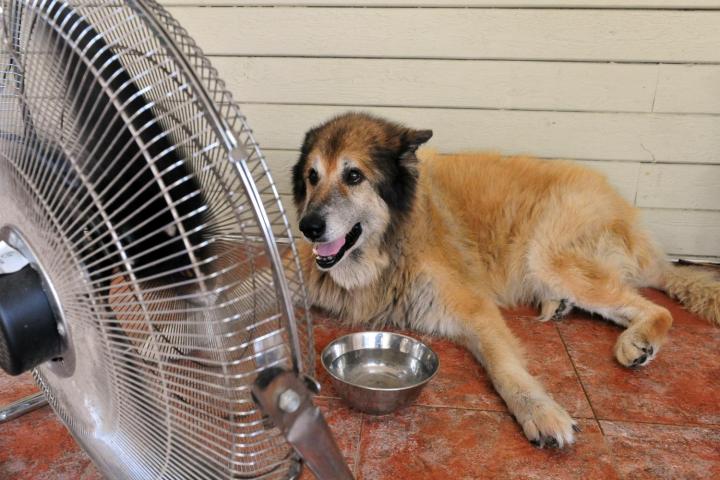
First, you should just shut it all down. Close your windows, close your blinds … as long as it’s daytime. Heat creeps in through the windows, and shades and curtains are your first line of defense and can substantially lower the temperature, according to the Family Handyman. If your flimsy, doily-like curtains aren’t doing the trick, consider getting some heat-control film. It blocks both the heat and UV rays and many are removable, making them a good choice for renters. At night, you can open your windows again, especially if things cool down when the sun drops where you live.
Hopefully you at least have a couple fans. Though it seems counterintuitive, if you have a window fan, it’s a good idea to position it so it’s blowing out. This sucks the hellish air out of your room and sets it free upon the breeze. Oh, if only there were a breeze. If you have another fan, you can set it up to create a cross breeze by placing it opposite the fan pushing air out. Situate a bowl of ice water in front of this fan as a sort of poor (miserable, suffering) man’s air conditioner. You can also set your ceiling fan in a counterclockwise spin, so it’s blowing down on you. If you’re short on fans, hang a wet sheet in front of your window for the same air-conditioner-esque effect.
Speaking of sheets, unrepentant heat when you’re trying to sleep is even more miserable than during the day. Instead of hanging up that damp sheet, you can try the “Egyptian method” of staying cool and actually sleep using a slightly wet sheet as a blanket. As the sheet dries, it will keep you fresh as a daisy. If that sounds unappealing (though it works pretty well), you can try sprinkling baby powder on your sheets instead. Do not, I repeat, do not try both methods at the same time. Also, it helps if your sheets are a lightweight and natural material like cotton, and you might want to consider a buckwheat pillow. And though it’s cheaper to just buy an air conditioner, there is a cooling mattress pad that will help keep you chill.
A few other tips for keeping the house temperature a little lower is using a grill or slow cooker instead of the oven, swapping incandescent light bulbs for LED bulbs, unplugging appliances that get hot even when not in use, and closing off rooms to help keep the cold air where you want it. Some of the more-involved projects include ensuring your house is well insulated, weather-sealing windows and doors, adding some shade with awnings or planted trees, and installing an attic fan. Yes, you probably don’t want to do any of these today, but the good news is that many of these will help keep your house warmer in the winter, too. Just remember, there will be a day when you wish you were warmer.


